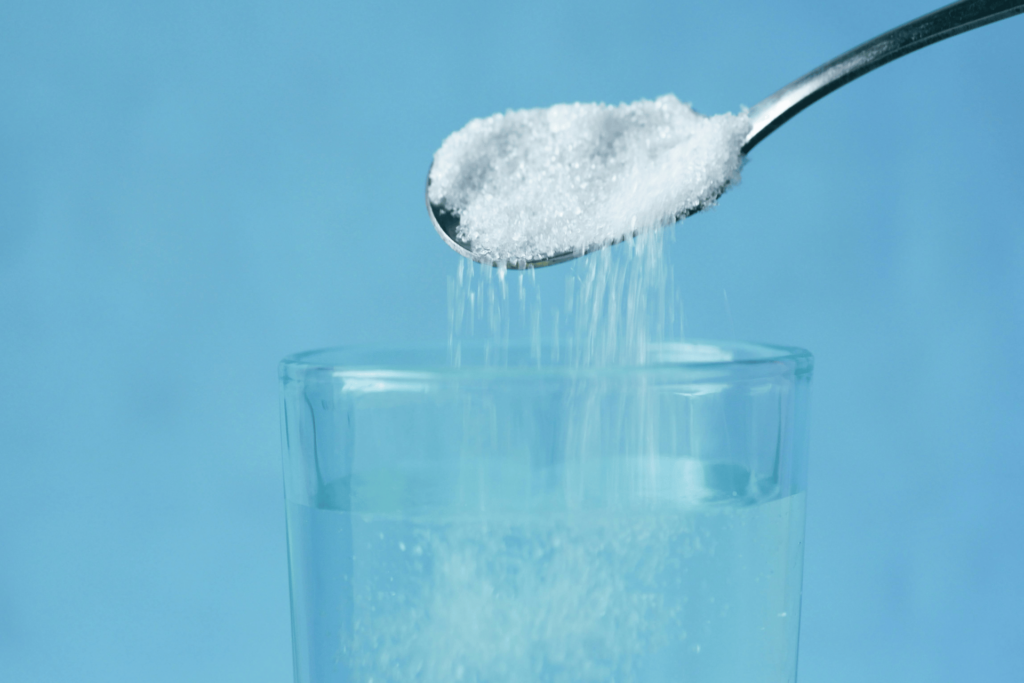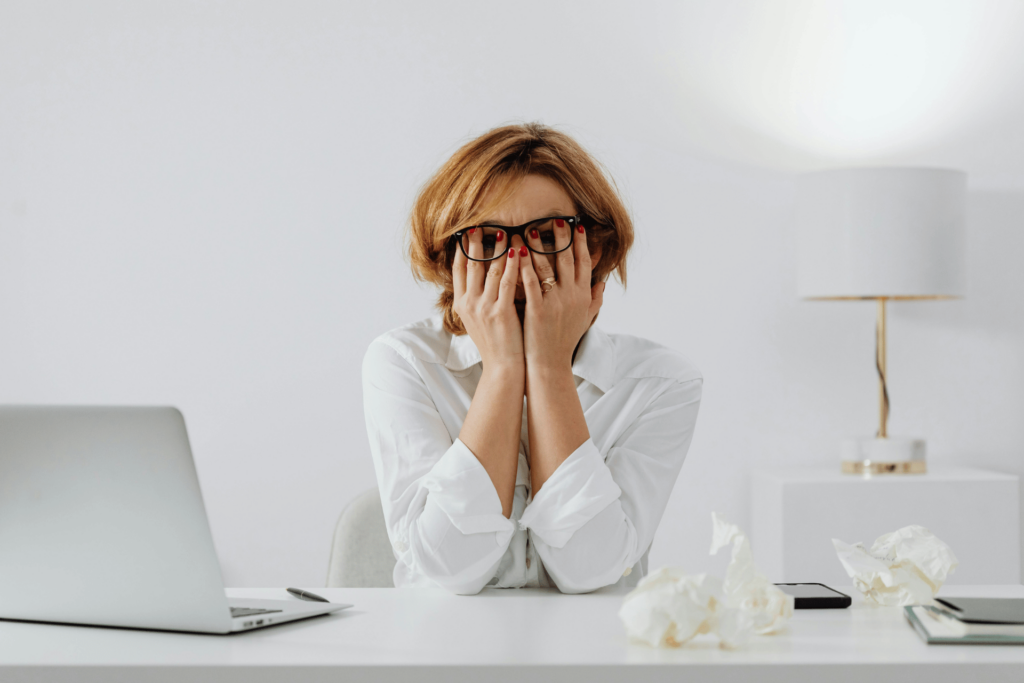Fatigue, Itch, Headache, and Weight Gain Signal Yeast Overgrowth.
 One of the trickiest infections to identify in women, candida yeast overgrowth can cause a variety of symptoms ranging from cystitis and endometriosis to chronic fatigue and PMS. If you have recurrent vaginal or urinary infections, suffer overwhelming fatigue, headache, or feel sick all over, a systemic yeast infection may be to blame.
One of the trickiest infections to identify in women, candida yeast overgrowth can cause a variety of symptoms ranging from cystitis and endometriosis to chronic fatigue and PMS. If you have recurrent vaginal or urinary infections, suffer overwhelming fatigue, headache, or feel sick all over, a systemic yeast infection may be to blame.
One in three Americans has candidiasis (chronic yeast infection). And the majority are women.
Yeast thrives in the female bladder, urethra, and vagina, which provide the perfect moist environment for overgrowth. Plus frequent and regular hormonal changes from birth control pills, menstrual cycles, and pregnancy encourage yeast growth.
Women are also more likely than men to seek medical treatment even though yeast infection is hard to diagnose because the symptoms—headache, sinus congestion, abdominal or joint pain, depression, insomnia, skin itch or rash, irregular periods, and weight gain or loss—are so varied.
Without a correct diagnosis, women may be offered drugs—antibiotics, birth control pills, and steroids—that encourage an overgrowth of yeast in the body while masking certain symptoms. In women, yeast infection is more likely to spread throughout the body, depressing the immune system and making it hard to fight off future infections.
Dr. Ann Louise’s Take:
Candida is a Jekyll and Hyde micro-organism. This normally harmless yeast, an ever-present inhabitant of our gastrointestinal system, can turn dangerous overnight when antibiotics or other drugs upset GI balance or pH—and kill off beneficial bacteria.
The malfunctioning of endocrine glands like the adrenals or thyroid may be a hidden factor in some yeast infections. Candidiasis creates a vicious cycle, weakening an already depressed immune system and causing nutritional deficiencies that feed yeasts.
While it’s advisable to share your medical history and symptoms thoroughly with an integrative practitioner, a yeast infection that presents itself as Mr. Hyde during testing can prevent an accurate diagnosis. One self-test I recommend to my clients—as a starting point for more advanced testing—is to spit into a glass of water. If saliva rises to the top and looks stringy, ropey, and sticky, chances are the stools are too—a potential sign of candida yeast.
For yeast overgrowth or infection, try these safe ways to fight Mr. Hyde:
1. Eliminate yeast and mold from your diet – breads, pastries, pretzels, and other baked goods using yeast, brewer’s yeast, most fermented foods (buttermilk, cheeses, sour cream), vinegar and condiments, most alcoholic drinks (beer, brandy, cider, rum, whiskey, wine), and yeast-based supplements (read labels carefully). Exceptions are apple-cider vinegar, which does not produce yeast, and foods with probiotics (like yogurt with live, active cultures).
2. Boost yourself with Biotin – this B vitamin has been found to prevent candida from showing its dangerous Mr. Hyde side. Biotin 5 mg contains the optimal dosage advised by clinicians. If you’ve been losing hair or have problem nails with yeast overgrowth, biotin will strengthen both.
3. Replenish your body’s supply of beneficial bacteria – take Flora-Key with 6.5 billion active organisms. Numerous studies show a number of probiotics fight candida yeast infection and the inflammation it causes.
4. Cut out sugar – it feeds both infection and yeast. Besides avoiding sweets and soft drinks, limit processed foods like tomato sauce and baked beans, which are hidden sources of sugar. Satisfy your sweet tooth with a sprinkle of Flora-Key – this probiotic doubles as a sweetener in no-heat recipes.
5. Limit refined grains and high-glycemic carbs – if not fully absorbed, they provide a fertile environment for yeast. Don’t eat fruit for at least two weeks on a candida-free diet, starting back with only one small serving a day once you feel better.
6. Support beneficial bacteria and continue fighting yeast with Y-C Cleanse – a homeopathic formula clinically proven safe and effective against yeast overgrowth. Because this product is designed for both acute yeast infection and candida-free maintenance, take Y-C Cleanse for at least 24 days, and then give your body a five- to six-day break to rebalance itself while you assess symptoms. If they persist, resume treatment.
7. Support your adrenal glands – an adrenal supplement is essential if you’re stressed out (and, believe me, a yeast infection is certainly stressful). Also pay attention to your copper-zinc balance. Zinc deficiency and copper biounavailability are also factors in yeast overgrowth. UNI KEY Female Multiple is a copper-free multivitamin-mineral supplement especially created for women with both iodine and zinc to support endocrine function and the immune system.
Sources:
https://www.ncbi.nlm.nih.gov/pubmed/19703242
Super Nutrition for Women ( Bantam Dell, 2004)









16 Responses
I’ve read through other sources that with the spit test there would be stringy saliva hanging from the top of water, also dots of saliva in the middle and saliva at the bottom of the glass because the yeast is heavy and will drop to the bottom. You say that it will stay at the top. Can you clarify? I’m pretty sure I have candidiasis and already doing most of the steps and some others. I did the test last week and it looked like what I just described and most of it was on the bottom of the cup. I wonder what that means. Thank you.
I know I’ve got way too much yeast in my body but I’m so stuck on the healthy way to live vs the why can’t I just be a normal person way of livin’. I normally flush twice a year (since the Living Detox 2-page version) but boy, am I tired. Got any new invigorating advice? Not overweight, but a generally healthy 44 1/2 year old female that likes to live a little.
Stuck,
Jennifer
Don’t know that much about the spit test, to tell you the truth but if you have symptoms then most likely you have the “fungus among us.”
For both of you, I would suggest the Y-C Cleanse that will prevent the yeast from overgrowing and allow you to enjoy your food. It has been my safeguard around the holidays when you can’t always be sugar-free
Please tell me this: what do you think of Threelac???? Is it the miracle cure they claim it is-or yet another expensive disappointment?
Andy, the product you mention does not contain any bifidobacterium – the most deficient of all the friendly flora.
The Y-C Cleanse sure worked fast for me when I had sinus congestion. It was better in 2 days
I recommend this book that helps to overcome candida: Xandria Williams, The Ultimate Cookery Guide
The Y-C Cleanse is great. I haven’t heard of Xandria Williams’ book yet, off to check it out. Wondering if it’s an ebook or can be bought at Amazon.com.
Just a gentle reminder: The Gut Flush Plan has a fully outlined yeast-control diet program as well as a suggested protocol for supplements, etc. etc.
Y-C Cleanse is the best thing since sliced bread to fend off fungus!
The Y-C cleanse doesn’t contain any bifidobacterium either
Hi Andy:
Yes, you are right Y-C is not a probiotic so therefore does not contain the bifidobacterium or acidophilus. However, both Flora Key and Dr. O’s Probiotics 12 Plus provide ample bifidobacterium – which is the most essential beneficial bacteria for the colon. Y-C should also be accompanied by a friendly flora supplement to recolonize the large intestine.
Hi Dr. Gittleman,
I am a 72-year-old woman, having multiple symptoms, such as osteomalacia, osteopenia, sarcopenia, deep-seated and recurring bladder infection (for which I was taking a long-term antibiotic treatment, which caused the candida-related problems), muscle weakness and atrophy, knee joint pain, and general weakness/lack of strength, multiple food allergies/intolerances and fatigue. From all I’ve read, they are all tied to Candidiasis, leaky gut, etc., but I can’t find a doctor that accepts Medicare and Medigap insurance who is also knowledgeable about treating these. How can I treat this successfully by myself, or can I? It seems overwhelming to try to resolve all of the problems. What to do? Thank you so much for any advice. Janet
Oh, yes — I have had Candidiasis before, in 1987, and was treated with Nystatin, but that Dr. has retired. Thanks. Janet
Dear Friends:
I would love to answer each and every single one of your queries, as I have done to the best of my ability, in the past. The popularity of this Blog has grown to the extent that I can no longer provide that service but I am in the planning stages of an Internet – TV show where you can call in and get those questions answered by me in person! Please stay tuned for this exciting development. I first must complete a new manuscript and then will make some exciting announcements. In the interim, may I suggest that if you have questions about products, call UNI KEY at 1-800-888-4353. The folks there are helpful and will direct you accordingly. If you are concerned about a particular health condition, then by all means check out the Testing Kits on my site which will help you to determine underlying causes. Please don’t let this dissuade you from posting. Thank you so much for your enthusiasm and interest!
This is a great article, except for your recommendation of Y-C Cleanse. As a rule of thumb, homeopathic remedies simply don’t work. They may have a placebo effect that can be very beneficial in some cases, but not in case of a yeast infection.
However, unlike most homeopathic “medicines”, Y-C Cleanse actually does contain an active and beneficial ingredient, which is coal. Medicinal charcoal or activated charcoal absorbs the toxins produced by Candida, which would otherwise would be absorbed by the gut lining and carried throughout the body by the bloodstream.
Charcoal is especially effective in combination with antifungal pharmaceuticals and helps prevent the awful side effects that can occur when large amounts of yeast cells are rapidly killed (known as Candida die-off poisoning). The best thing about medicinal charcoal, however, is that it’s remarkably cheap — much unlike Y-C Cleanse, which is not only expensive but also contains only very little coal.
PS: It is not recommended to take medicinal coal shortly after or together with probiotics, because charcoal absorbs bacteria (which also makes it very effective against light cases of food poisoning and bacterial diarrhea). It is recommended to take characoal early in the day and probiotics at a later time, ideally an hour or two after a meal, when the food has already passed your stomach. This helps provide the beneficial bacteria with nutrients while reducing the likelihood that they will be killed off by the stomach acid.
I think you must be mistaken- there is no charcoal in the Y-C Cleanse. I have used the Y-C Cleanse myself with great results. It is truly a powerful homeopathic.
I agree that using activated charcoal along with a yeast and candida detox may be helpful and reduce detox symptoms. It should not, however, replace an anti candida diet and supplement program.